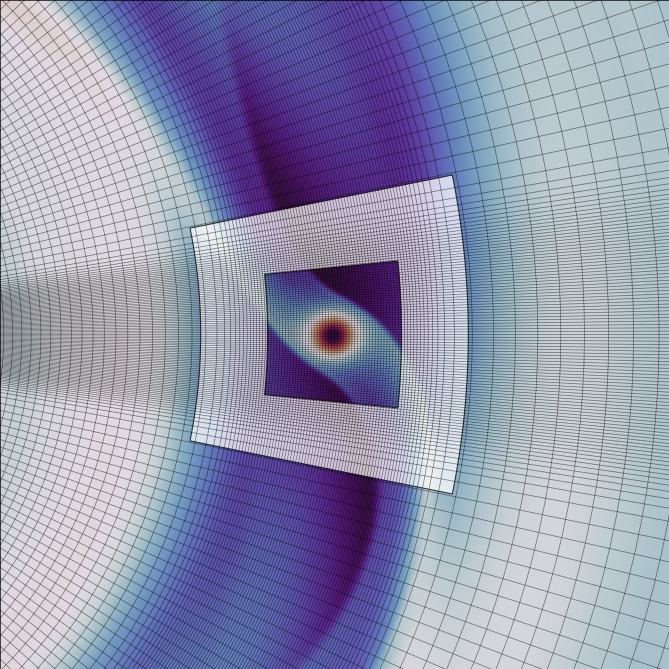Warning
This documentation will no longer be mantained. The official FARGO3D repository is now https://github.com/FARGO3D/fargo3d, and the documentation is https://fargo3d.github.io/documentation/
Non-uniform meshes¶
Notes about the non-uniform meshes feature:
Meshes are created via a mesh-density functions.
The feature is enabled by setting
SPACING Nin the.parfile.So far, mesh-density functions are implemented on
XandYonly.Non-uniform meshes in azimuth cannot use FARGO advection. Use
-DRAMin the.optinstead, which enables
the Rapid Advection Algorithm on Arbitrary Meshes (RAM). RAM is a time-explicit method to solve the advection equation in problems with large bulk velocity on arbitrary computational grids.
Warning
Current implementation of non-uniform meshes is not tested with MHD enabled. It may work with -DSTANDARD, but be careful if you use it.
Warning
Current implementation of the MHD solver does not include RAM.
To test out non-uniform meshes and RAM, the fargo_nu setup is included. This is a
slightly modified version of the fargo setup with non-uniform spacing and -DRAM enabled in the .opt file.
First run:
$: make SETUP=fargo_nu
$: ./fargo3d setups/fargo_nu/fargo_nu.par
As an example, we show a snapshot after 50 orbits.

The white box corresponds to the transition between resolution levels. It spans a width YMB-YMA and XMB-XMA in the radial and azimuthal direction, respectively.¶
Mesh-density functions implemented¶
Mesh density functions are implemented in src/mesh.c and src/defines.h, and are created in src/LowTasks.c.
Azimuthal and radial spacing are generated via the mesh-density functions described by Eq. (B7) y (B14) in Benítez-Llambay et al. (2023).
Along the azimuthal direction, current implementation assumes the domain to be periodic.
Three parameters (in the .par file) control the grid:
XMB: it controls where the lowest resolution level changes to the next level.XMA: it controls where the next level is effectively reached.XMC: it controls the resolution ratio between levels.
Notes about the utilization of these parameters:
In azimuth the mesh has to be centered at the origin.
-XMBhas to be greater thanXMIN.XMBhas to be smaller thanXMAX.XMB, XMAmust be set such thatXMA<XMB.Low-resolution region spans within
[XMIN,-XMB]and[XMB,XMAX].High-resolution region spans within the range
[-XMA,XMA].The transition between resolution levels occur over the width
XMB-XMA.
Along the radial direction, four parameters control the grid spacing:
YMA: analog toXMAYMB: analog toXMBYMC: analog toXMCYMY0: it controls the centering of the mesh
In addition, the radial spacing is constructed such that radial spacing is uniform in
logarithmic space for |y-YMY0|>YMB.
Implementing a new mesh-density function¶
To implement a new mesh-density function, the following modifications are needed:
Modify the functions
ux(),uy()insrc/mesh.c. These functions are
the cumulative integrals of the mesh-density functions, and are required to generate the mesh
through a bisection algorithm (see src/LowTasks.c, function InitSpace()).
Modify the macro
UXinsrc/defines.hso it matches the definition of ux insrc/mesh.c.Consider if you need to pass parameters to the cumulative function. In the current version,
we pass parameters as global parameters to ux to save computing time. These globals are set by the function
compute_ux_constants(), and are later used by the macro UX (see define.h).
Warning
RAM calls UX both on CPU and GPU to calculate indices efficiently on non-uniform spaces (see src/ram_comput_ustar.c), so consider optimizing any new function implemented.